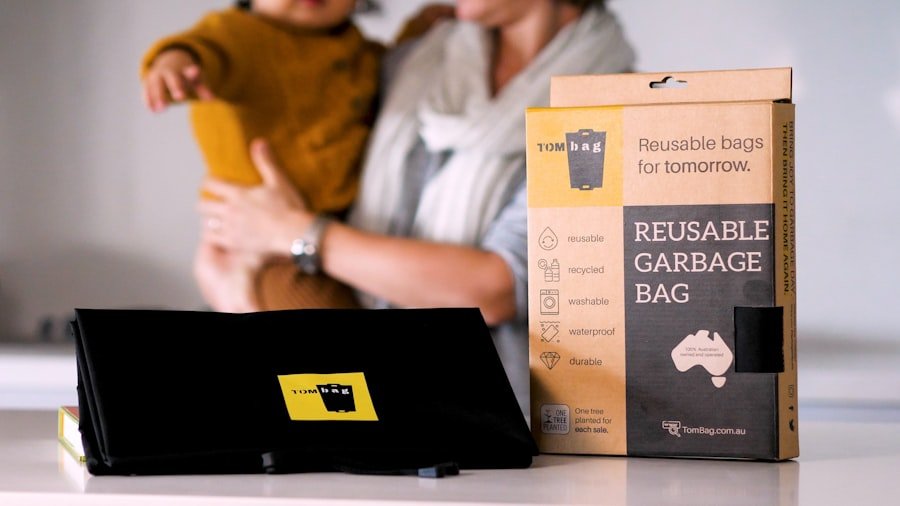In recent years, the concept of sustainability has gained significant traction across various industries, prompting businesses to rethink their operational models. One of the most transformative approaches emerging from this shift is the circular supply chain. Unlike traditional linear supply chains, which follow a ‘take-make-dispose’ model, circular supply chains are designed to minimise waste and make the most of resources.
This paradigm shift not only addresses environmental concerns but also offers economic advantages, fostering innovation and resilience in business practices. The circular supply chain is rooted in the principles of the circular economy, which advocates for the continual use of resources through recycling, reusing, and refurbishing. This approach encourages companies to design products with their entire lifecycle in mind, ensuring that materials can be recovered and repurposed at the end of their initial use.
As businesses increasingly recognise the importance of sustainable practices, understanding the intricacies of circular supply chains becomes essential for those aiming to thrive in a rapidly evolving marketplace.
Summary
- Circular supply chain aims to minimize waste and maximize the value of resources by keeping products and materials in use for as long as possible.
- Understanding the concept of circular supply chain involves rethinking traditional linear supply chain models and focusing on designing out waste and pollution, keeping products and materials in use, and regenerating natural systems.
- Adopting a circular supply chain can lead to various benefits such as cost savings, reduced environmental impact, enhanced brand reputation, and increased resilience to supply chain disruptions.
- Key components of a circular supply chain include product design for longevity and recyclability, reverse logistics for product take-back and recycling, and collaboration with suppliers and partners to close the loop on materials.
- Successful examples of circular supply chain practices include companies like Patagonia, H&M, and Philips, who have implemented take-back and recycling programs, as well as innovative product design for circularity.
Understanding the Concept of Circular Supply Chain
Interconnectedness and Collaboration
In a circular supply chain, every stage of production and consumption is interconnected, with an emphasis on sustainability and resource efficiency. This interconnectedness requires collaboration among various stakeholders, including suppliers, manufacturers, consumers, and recyclers.
Rethinking Product Design and Sourcing
The implementation of a circular supply chain involves rethinking product design, sourcing materials responsibly, and establishing systems for recovery and recycling. For instance, companies may opt for biodegradable materials or design products that can be easily disassembled for repair or recycling.
Enhancing Brand Reputation and Customer Loyalty
This holistic approach not only reduces the environmental impact but also enhances brand reputation and customer loyalty. As consumers become more environmentally conscious, businesses that adopt circular supply chain practices can differentiate themselves in a competitive market.
Benefits of Adopting a Circular Supply Chain

The transition to a circular supply chain offers numerous benefits that extend beyond environmental sustainability. One of the most significant advantages is cost savings. By reusing materials and reducing waste, companies can lower their operational costs and mitigate the risks associated with fluctuating raw material prices.
For example, organisations that implement recycling programmes can significantly reduce their expenditure on new materials while simultaneously generating revenue from recycled products. Moreover, adopting a circular supply chain can enhance a company’s resilience against supply chain disruptions. The COVID-19 pandemic highlighted vulnerabilities in global supply chains, prompting businesses to seek more sustainable and local sourcing options.
A circular supply chain encourages companies to build relationships with local suppliers and invest in sustainable practices that can withstand external shocks. This not only secures a more stable supply of materials but also fosters community engagement and support.
Key Components of a Circular Supply Chain
Several key components underpin the successful implementation of a circular supply chain. First and foremost is product design, which plays a crucial role in determining how easily a product can be reused or recycled. Companies must prioritise designing products with modularity in mind, allowing for easy disassembly and repair.
This approach not only extends the product’s lifecycle but also reduces waste generated at the end of its use. Another essential component is the establishment of effective reverse logistics systems. These systems facilitate the collection and processing of used products, enabling companies to recover valuable materials for reuse or recycling.
Efficient reverse logistics not only ensures that materials are reintegrated into the supply chain but also enhances customer satisfaction by providing convenient return options. Additionally, collaboration among stakeholders is vital; businesses must engage with suppliers, customers, and recyclers to create a cohesive network that supports circular practices.
Examples of Successful Circular Supply Chain Practices
Numerous companies have successfully implemented circular supply chain practices, showcasing the potential benefits of this approach. One notable example is IKEA, which has committed to becoming a fully circular business by 2030. The furniture giant has introduced initiatives such as furniture take-back programmes, where customers can return used items for refurbishment or recycling.
By doing so, IKEA not only reduces waste but also creates new revenue streams from refurbished products. Another exemplary case is Unilever, which has made significant strides in adopting circular economy principles across its operations. The company has invested in sustainable sourcing practices and aims to make all its plastic packaging recyclable or reusable by 2025.
Unilever’s commitment to reducing its environmental footprint has resonated with consumers, enhancing brand loyalty and driving sales growth. These examples illustrate how embracing circular supply chain practices can lead to innovative solutions that benefit both businesses and the environment.
Challenges and Barriers to Implementing a Circular Supply Chain

Despite the clear advantages of adopting a circular supply chain, several challenges hinder its widespread implementation. One significant barrier is the initial investment required to redesign products and establish new processes. Many companies may be reluctant to allocate resources towards these changes due to concerns about short-term profitability.
Additionally, the lack of established infrastructure for recycling and recovery can pose significant challenges, particularly in regions where waste management systems are underdeveloped. Another challenge lies in changing consumer behaviour and perceptions. While there is a growing awareness of sustainability issues, many consumers still prioritise convenience over eco-friendliness when making purchasing decisions.
Companies must invest in education and marketing efforts to communicate the benefits of circular products effectively. Furthermore, regulatory frameworks may not always support circular practices; businesses often face complex compliance requirements that can stifle innovation.
Strategies for Overcoming Challenges in Circular Supply Chain Implementation
To navigate the challenges associated with implementing a circular supply chain, companies can adopt several strategies aimed at fostering innovation and collaboration. One effective approach is to engage in partnerships with other organisations, including NGOs and governmental bodies, to share knowledge and resources. Collaborative initiatives can help businesses pool their expertise and develop solutions that address common challenges related to sustainability.
Investing in research and development is another critical strategy for overcoming barriers to circular supply chains. By exploring new materials and technologies that facilitate recycling and reuse, companies can enhance their product offerings while minimising environmental impact. Additionally, businesses should consider adopting flexible business models that allow for experimentation with circular practices without jeopardising overall profitability.
The Future of Circular Supply Chain in Sustainable Business Practices
As global awareness of environmental issues continues to rise, the future of circular supply chains appears promising within sustainable business practices. Companies that embrace this model will likely find themselves at the forefront of innovation while simultaneously addressing pressing ecological concerns. The transition towards circularity not only aligns with consumer expectations but also positions businesses as leaders in sustainability.
In conclusion, the adoption of circular supply chains represents a significant opportunity for organisations seeking to enhance their resilience and competitiveness in an increasingly complex marketplace. By understanding the principles underlying this approach and actively engaging with stakeholders across the value chain, businesses can pave the way for a more sustainable future while reaping economic benefits along the way.
A related article to understanding What is a Circular Supply Chain can be found in the case study titled “A revolution in stock monetization: SupplyMe” from Business Case Studies. This case study explores how companies can effectively manage their stock levels and maximise profits through innovative supply chain strategies. By implementing a circular supply chain model, businesses can reduce waste, improve sustainability, and create a more efficient and cost-effective system. This article provides valuable insights into the benefits of adopting a circular approach to supply chain management.
FAQs
What is a Circular Supply Chain?
A circular supply chain is a system that aims to minimize waste and maximize the use of resources by keeping products and materials in use for as long as possible. It focuses on reducing, reusing, and recycling materials to create a closed-loop system.
How does a Circular Supply Chain differ from a Linear Supply Chain?
In a linear supply chain, products are made, used, and then disposed of, creating a one-way flow of materials. In contrast, a circular supply chain aims to keep products and materials in use for as long as possible, reducing the need for new resources and minimizing waste.
What are the key principles of a Circular Supply Chain?
The key principles of a circular supply chain include designing products for longevity and recyclability, using renewable or recycled materials, and implementing reverse logistics to recover and reuse products and materials at the end of their life cycle.
What are the benefits of implementing a Circular Supply Chain?
Implementing a circular supply chain can lead to reduced resource consumption, lower waste generation, cost savings, and improved environmental sustainability. It can also create new business opportunities and contribute to a more resilient and efficient supply chain.
What are some examples of companies implementing Circular Supply Chain practices?
Several companies have implemented circular supply chain practices, such as H&M, which collects used clothing for recycling, and Philips, which offers a lighting-as-a-service model where it retains ownership of the products and recycles them at the end of their life cycle.
